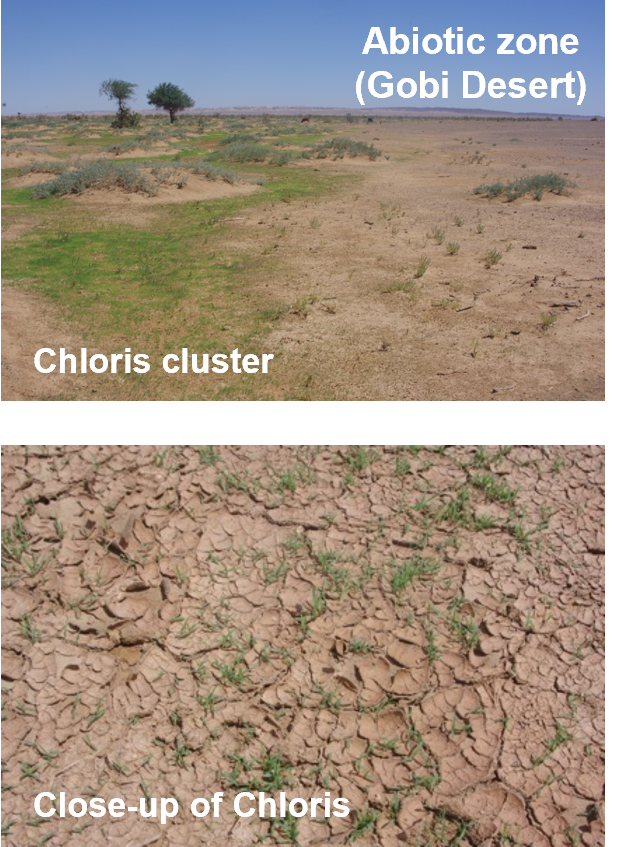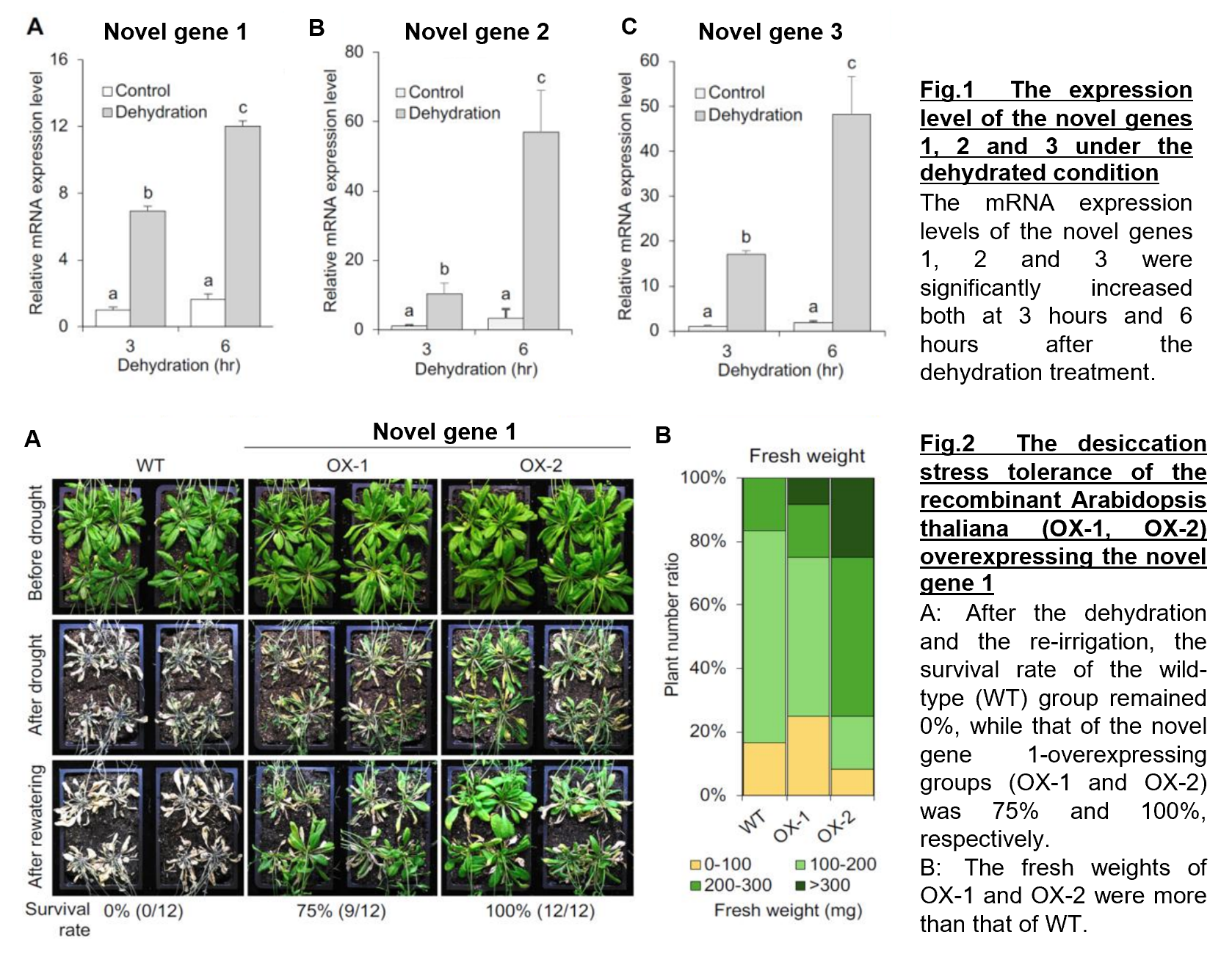Available Technologies
Desiccation Tolerance-Related Genes Derived from Mongolian Steppe Plants
Novel genes found to enhance desiccation stress tolerance useful for the production of plants capable of growing in harsh environments
Background
Climate change, driven by global warming, is reducing arable land and accelerating desertification, worsening declines in crop yields and green spaces. The development of plants and crops capable of growing in arid lands and other harsh climatic conditions is expected to provide a solution to these challenges.
Description and Advantages
 The Mongolian an Gobi Desert region experiences extremely dry conditions, with an annual precipitation of only 50mm, and is subjected to harsh climate conditions, with temperatures dropping below -20°C in winter. The research team identified a novel group of genes induced by desiccation stress from Chloris virgata (Chloris), which thrives in extreme abiotic conditions in harsh arid regions (Fig.1). These novel genes confer desiccation stress tolerance to plants as shown in the gene-introduction experiments with the model plant Arabidopsis thaliana (Fig. 2).
The Mongolian an Gobi Desert region experiences extremely dry conditions, with an annual precipitation of only 50mm, and is subjected to harsh climate conditions, with temperatures dropping below -20°C in winter. The research team identified a novel group of genes induced by desiccation stress from Chloris virgata (Chloris), which thrives in extreme abiotic conditions in harsh arid regions (Fig.1). These novel genes confer desiccation stress tolerance to plants as shown in the gene-introduction experiments with the model plant Arabidopsis thaliana (Fig. 2).
➢ Identification of novel genes contributing to desiccation stress tolerance
It is predicted that the genes activate desiccation stress tolerance signaling pathways to stimulate the biosynthesis of related hormones.
➢ Desiccation stress-tolerant recombinant obtainable simply by the gene introduction to plants other than C. virgata

| Development Status |
Technology Readiness Level: 2 ・Identified the novel desiccation tolerance genes (Fig.1) ・Confirmed the high fresh weight retention in plants overexpressing the found gene after drying treatment (Fig.2) ・Ongoing experiments with grain plants to evaluate the desiccation tolerance enhancement by the novel gene introduction |
|---|---|
| Offer | ・Patent License ・Option for Patent License ・Collaborative Research ・MTA (provision of plasmid) |
| Related Links | View PDFView in Japanese |
Have you found what you were looking for?
- Interested in a particular research activity
- Cannot find the information
- Have questions on how to utilize research results
Feel free to contact us and get answers to your questions.
Inquiry- TLO-KYOTO
- Available Technologies
- Desiccation Tolerance-Related Genes Derived from Mongolian Steppe Plants
3rd Floor, International Science
Innovation Building, Kyoto University
Yoshidahonmachi, Sakyo-ku, Kyoto
606-8501 JAPAN


